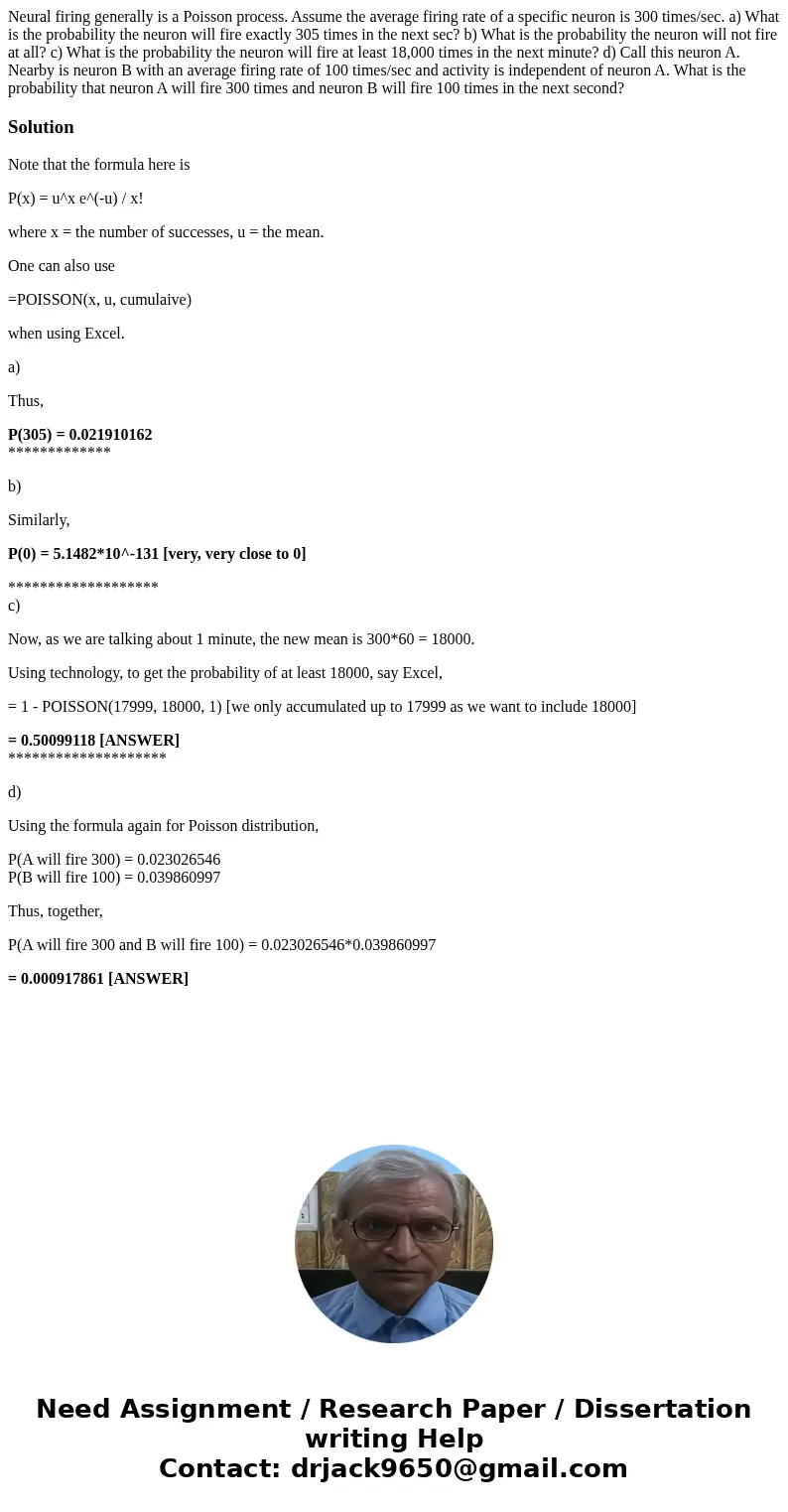Neural firing generally is a Poisson process Assume the aver
Neural firing generally is a Poisson process. Assume the average firing rate of a specific neuron is 300 times/sec. a) What is the probability the neuron will fire exactly 305 times in the next sec? b) What is the probability the neuron will not fire at all? c) What is the probability the neuron will fire at least 18,000 times in the next minute? d) Call this neuron A. Nearby is neuron B with an average firing rate of 100 times/sec and activity is independent of neuron A. What is the probability that neuron A will fire 300 times and neuron B will fire 100 times in the next second?
Solution
Note that the formula here is
P(x) = u^x e^(-u) / x!
where x = the number of successes, u = the mean.
One can also use
=POISSON(x, u, cumulaive)
when using Excel.
a)
Thus,
P(305) = 0.021910162
*************
b)
Similarly,
P(0) = 5.1482*10^-131 [very, very close to 0]
*******************
c)
Now, as we are talking about 1 minute, the new mean is 300*60 = 18000.
Using technology, to get the probability of at least 18000, say Excel,
= 1 - POISSON(17999, 18000, 1) [we only accumulated up to 17999 as we want to include 18000]
= 0.50099118 [ANSWER]
********************
d)
Using the formula again for Poisson distribution,
P(A will fire 300) = 0.023026546
P(B will fire 100) = 0.039860997
Thus, together,
P(A will fire 300 and B will fire 100) = 0.023026546*0.039860997
= 0.000917861 [ANSWER]

 Homework Sourse
Homework Sourse